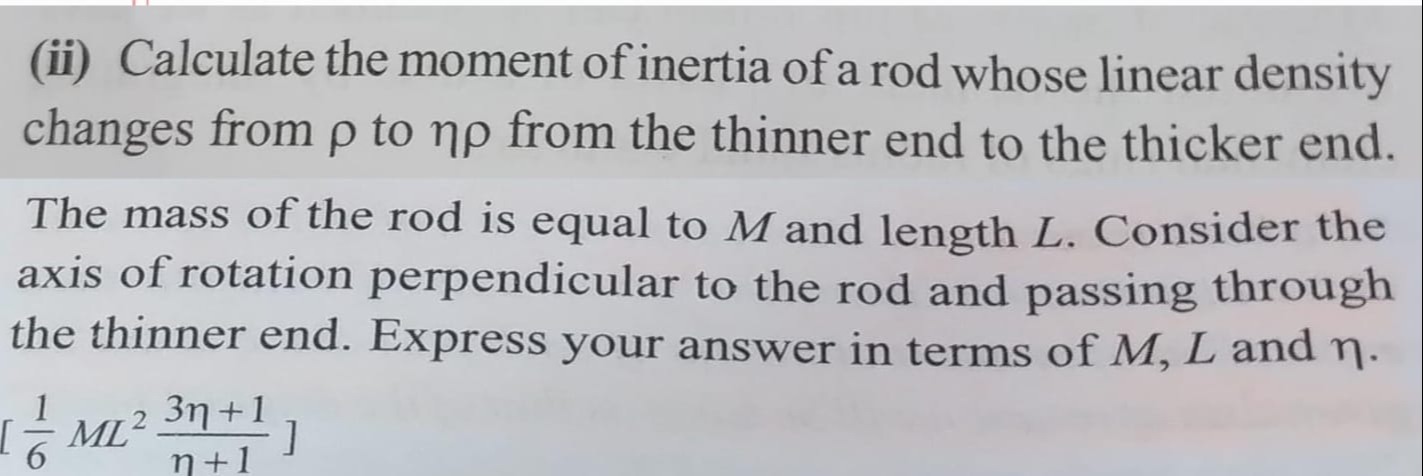Question
Question: Calculate the moment of inertia of a rod whose linear density changes from $\rho$ to $\eta\rho$ from...
Calculate the moment of inertia of a rod whose linear density changes from ρ to ηρ from the thinner end to the thicker end.
The mass of the rod is equal to M and length L. Consider the axis of rotation perpendicular to the rod and passing through the thinner end. Express your answer in terms of M, L and η.

61ML2η+13η+1
31ML2η+13η+1
61ML23η+1η+1
31ML23η+1η+1
61ML2η+13η+1
Solution
Let the linear density of the rod at a distance x from the thinner end be λ(x). Given that the density at the thinner end (x=0) is ρ and at the thicker end (x=L) is ηρ. Assuming a linear variation of density with distance, we can write λ(x) as: λ(x)=ρ+L(ηρ−ρ)x=ρ+L(η−1)ρx
The total mass M of the rod is given by integrating the linear density over its length: M=∫0Lλ(x)dx=∫0L(ρ+L(η−1)ρx)dx M=ρ[x+L(η−1)2x2]0L=ρ(L+2L(η−1)L2) M=ρ(L+2(η−1)L)=ρL(1+2η−1)=ρL(22+η−1) M=ρL2η+1
From this, we can express ρ in terms of M, L, and η: ρ=L(η+1)2M
The moment of inertia I of the rod about an axis perpendicular to the rod and passing through the thinner end (x=0) is given by: I=∫0Lx2dm=∫0Lx2λ(x)dx I=∫0Lx2(ρ+L(η−1)ρx)dx=ρ∫0L(x2+Lη−1x3)dx I=ρ[3x3+Lη−14x4]0L=ρ(3L3+4L(η−1)L4) I=ρ(3L3+4(η−1)L3)=ρL3(31+4η−1) I=ρL3(124+3(η−1))=ρL3(124+3η−3)=ρL3123η+1
Now, substitute the expression for ρ: I=(L(η+1)2M)L3(123η+1) I=L(η+1)2ML3⋅123η+1=η+12ML2⋅123η+1 I=61ML2η+13η+1
